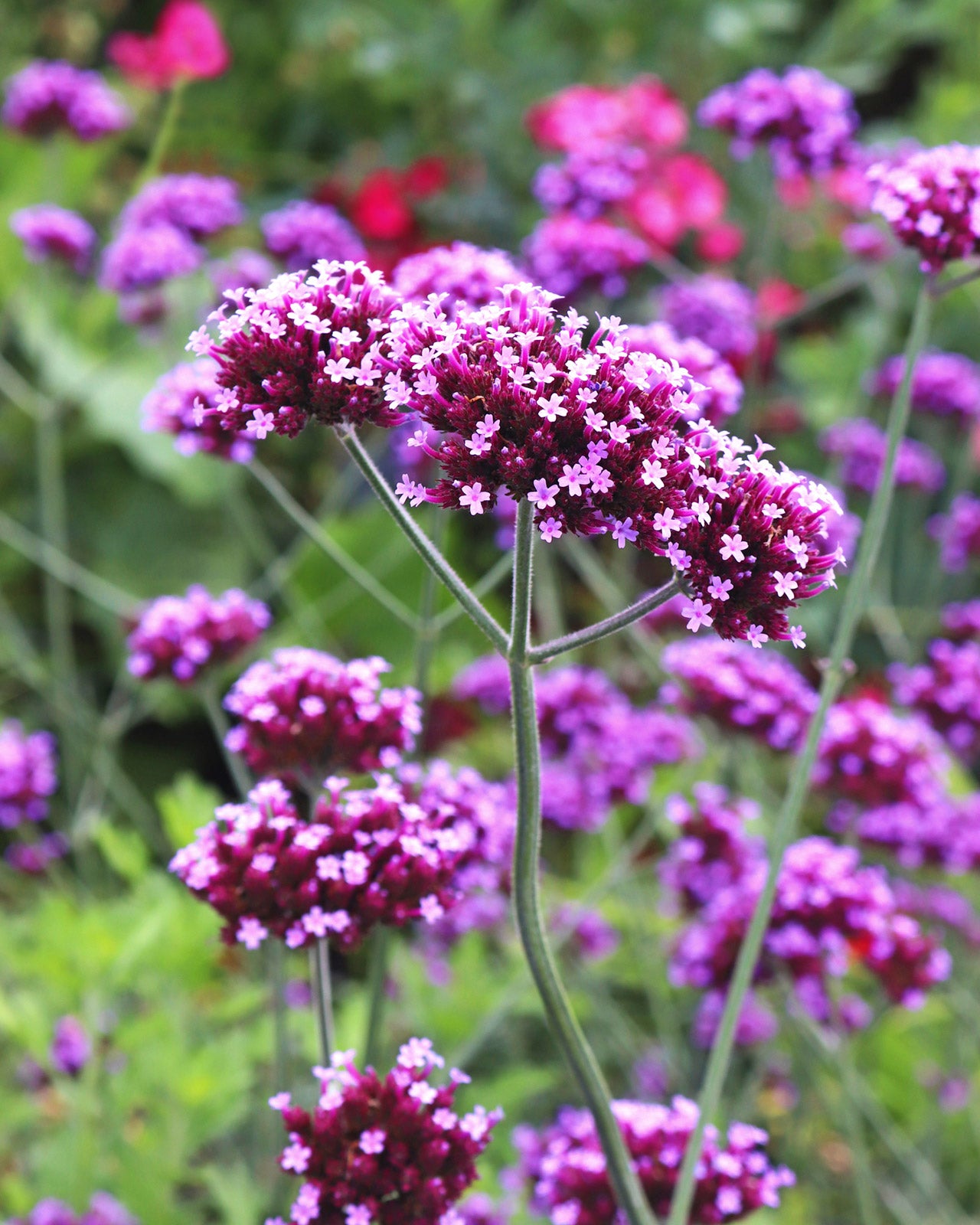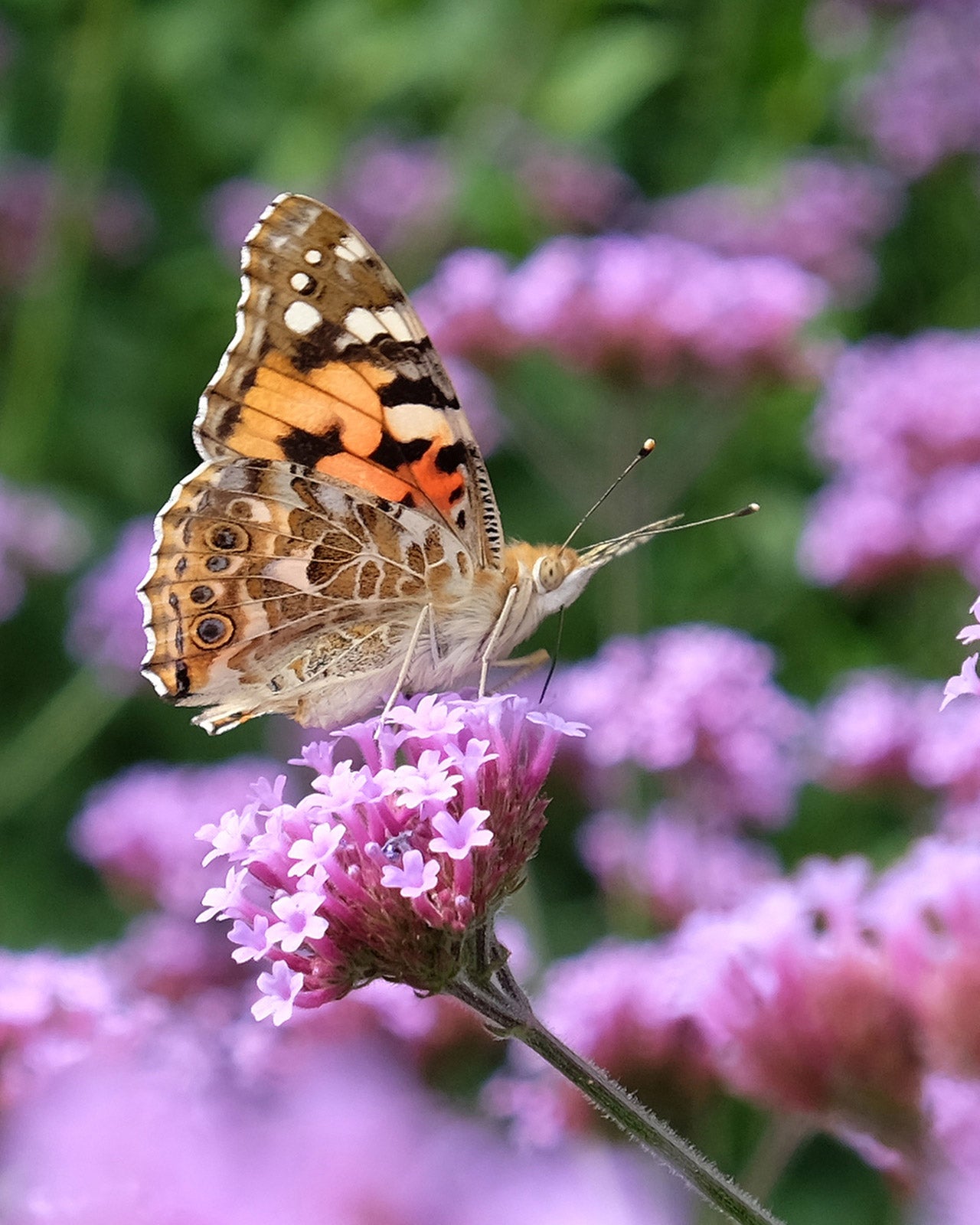

-
Why we like this plant
Ideal for modern and naturalistic plantings, Verbena bonariensis offers exceptional pollinator appeal, movement, and height without blocking light to shorter plants. A must-have for wildlife-friendly and low-maintenance gardens.
-
About this plant
Verbena bonariensis is a tall, slender perennial native to South America, highly valued in UK gardens for its transparent form and extended blooming season. Its branching stems carry small, lavender-purple flowers in tight clusters, appearing to float above the rest of the border. Loved by pollinators, this plant is often found weaving through prairie-style plantings, gravel gardens, and informal borders, adding both structure and a sense of lightness. It self-seeds readily, creating a naturalised look over time without becoming invasive.
-
Key features
- Tall, wiry stems with purple flower clusters
- Very attractive to bees and butterflies
- Excellent for adding vertical interest
-

Height and
spread100–150cm high × 30–45cm wide
-

Growth
habitUpright, airy, branching
-

Moisture
Moist but well-drained
-

Position in
the GardenMiddle to back of borders, wildlife gardens, prairie-style planting
Planting guide
Plant in full sun in well-drained soil. Allow at least 30–45cm between plants for airflow and visual impact. Works beautifully interplanted among grasses and other airy perennials.
Care tips
Deadhead regularly to prolong flowering and prevent excessive self-seeding if desired. Cut back to ground level in late autumn or early spring. Mulch lightly and apply a general-purpose fertiliser in spring to support vigorous growth.
Winter care
While considered half-hardy in colder regions, Verbena bonariensis often survives mild UK winters, especially with a layer of mulch to protect the crown. In frost-prone areas, treat as an annual or collect seed for sowing the following year.











